Do Bass Have Teeth Do Bass Feed in Schools
Boat Safe is a community supported site. We may earn commission from links on this page, but we have confidence in all recommended products.
The mention of bass fish is enough to excite any competitive angler as it is the most sought after trophy in their circles. It is important to distinguish one from the other because this information helps you plan how to snare them while keeping within restrictions. Certain species are protected for a reason or another, yet they closely resemble each other.
Bass fish can be grouped into two major categories: black bass and temperate bass.
Black Bass
There are a few species classified as black bass. They are a type of largely freshwater fish of the sunfish family that constitutes the genus Micropterus. They are loved for their reputation as hard fighting game fishes.
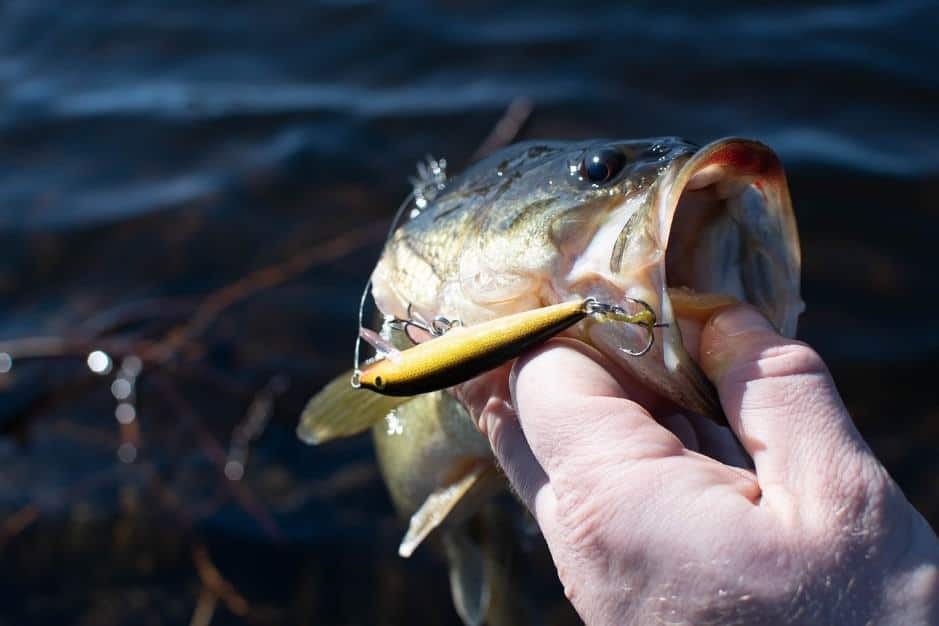
Largemouth Bass (Micropterus Salmoides)
This is the most prevalent game fish in the United States. It is so popular they even customize boat designs for efficient largemouth bass fishing. They have many professional associations and even more competitive tours for recreational bass fishing. Bass fishing is a multi-billion-dollar industry in the U.S., which has created employment for over 800,000 people.
It is also among the best tasting freshwater fish consumed by humans.
It is a member of the sunfish family, one of the black bass. It has a large mouth with an upper jaw extending back past the eye in adults and a tongue but lacks teeth. The color ranges from a silvery white to a brassy green and an occasional light brown for those whose habitat is darker water. It has a line along each side and a light belly. Their average mature length is 15.7 inches, with the highest know being 38 inches. It has two subspecies: the Florida Bass and the Northern Largemouth Bass. The Florida Bass grows to a larger size than the Northern Largemouth.
It prefers a quiet and clear environment and will be found in freshwater lakes, rivers, ponds, and swamps. Adults use submerged vegetation as cover while ambushing prey, while their young use weeds, logs, or stumps to avoid detection by predators. Their diet is insects, small fish, crayfish, frogs, and crustaceans. Make sure to bring along the right fishing rod for this type of bass.
Smallmouth Bass (Micropterus Dolomieui)
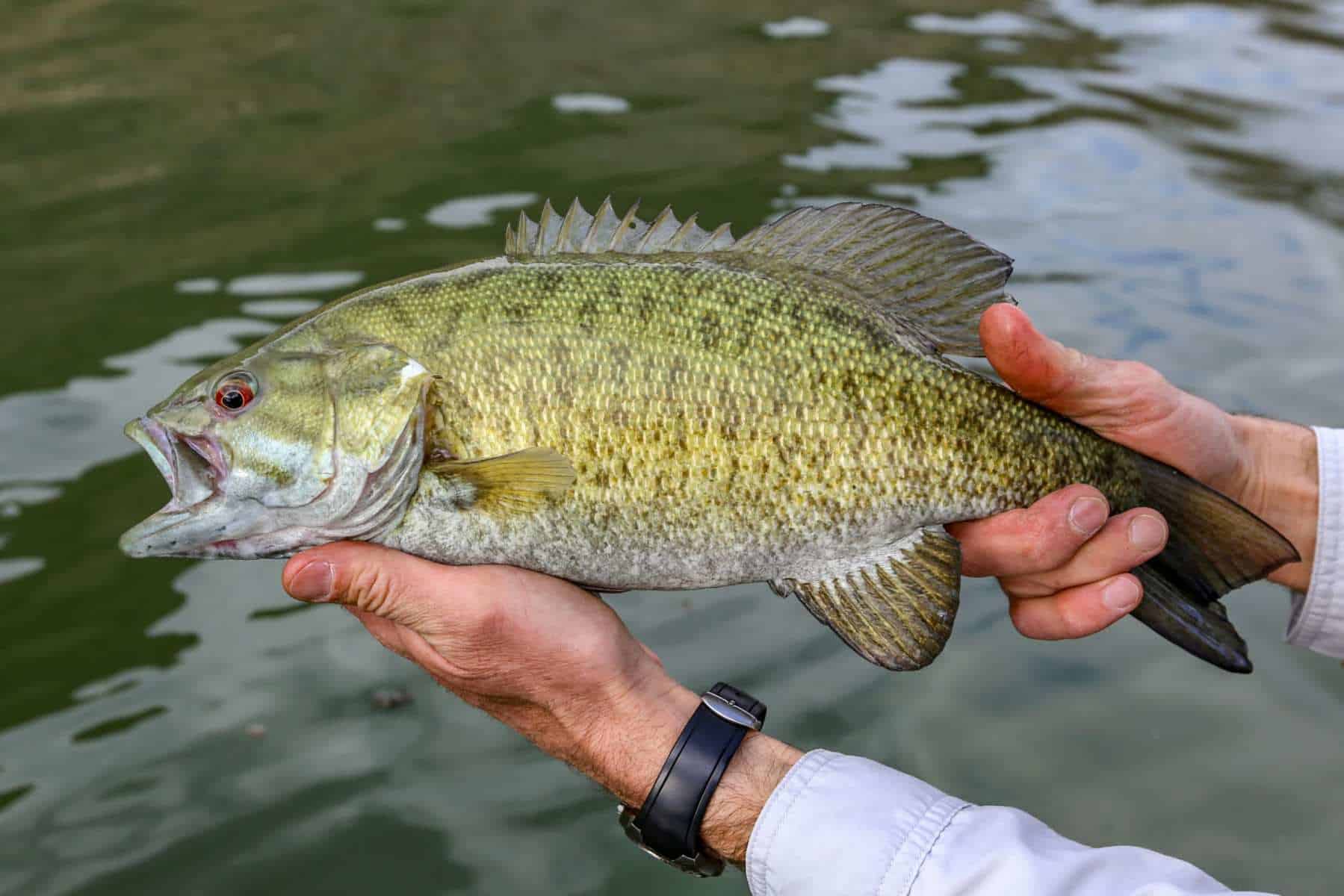
Anglers consider them excellent game fish because they are energetic and stubborn, which increases the thrill of catching them. They hardly submit once hooked and will often free themselves by jumping and twisting in the air. If caught deep, it will scramble for the closest cover, whether it is a weed or log, forcing the angler to work around it.
Their tails are proportionately bigger than those of largemouths, so they have developed stronger swimming muscles and are also more streamlined. This combination makes them a formidable force.
The upper jaw extends up to the eye level, and they are usually brown with red eyes. They have vertical bands as opposed to the horizontal stripes on the largemouth. The males are smaller than the females with an adult weight of about 2lb, while the females average at 3 to 6 lbs. They grow to an average of 12 inches, with the largest recorded at 20 inches.
They prefer clear, strong flowing streams, rivers, and lakes with gravel, boulders, or rock outcroppings. As much as they are also warm water species, they prefer cooler temperatures than the largemouths. Their larvae feed on zooplankton like water fleas before graduating to aquatic insect larvae and small fish, then crayfish and other fish like darters, minnows, yellow perch, and sunfish. Be sure to bring along the appropriate fish finder if you're out on a lake so you can make the most out of your trip.
Spotted Bass (Micropterus Punctulatus)
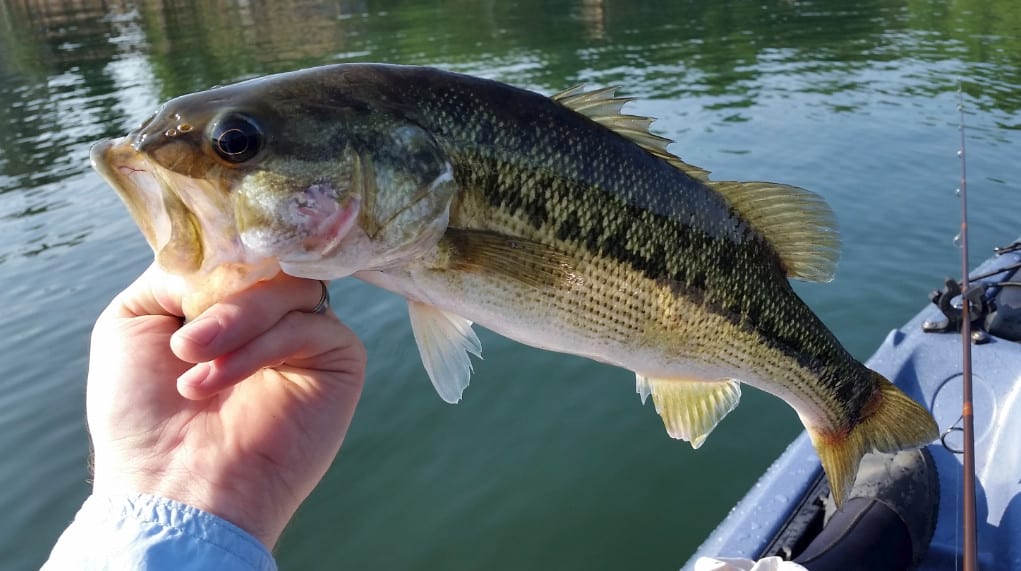
Also known as spotty, it closely resembles the largemouth bass. Because different states have different fishing restrictions, it is important to distinguish between the two. They are both good for human consumption besides recreational fishing.
When hooked, the spotted bass will retreat to the bottom of the waterbed to hide, unlike the largemouth, which jumps up to free itself. They are equally feisty, though. Other differences will be the physical characteristics. The jaw on a spotted bass does not extend past the eye line. They have a dark-spotted lateral line and dark spots towards their bellies.
Their habitat preferences are slightly different. They prefer areas with more current than largemouth bass but are too warm or muddled for smallmouth bass.
Their young feed on zooplankton and gradually progress to insects and then fish and crayfish.
Guadalupe Bass (Micropterus Treculli)
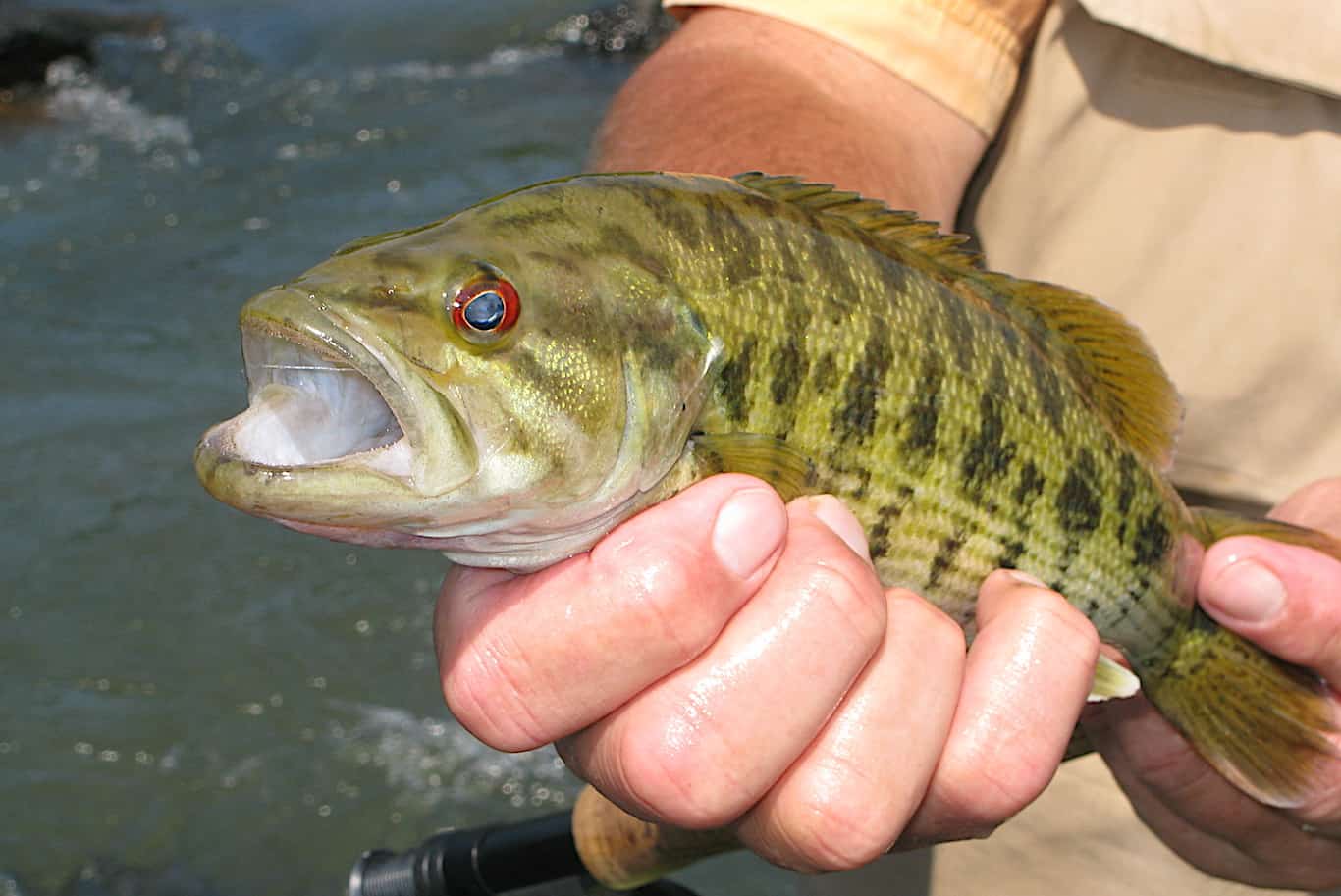
This is the official state fish of Texas. It is only found in streams in the Edwards Plateau region of Central Texas. It is closely related to the largemouth and spotted basses with a few distinct features. It has black, diamond-shaped patterns along its sides and rows of spots that form lines along its belly. Its coloration goes lower on the body than the spotted bass, and it has a generally greenish color.
They are adapted to flowing streams. As a result, they don't grow large, with the average adult weighing 3lbs. This preference for small streams also thrills anglers as they want to experience the natural setting where streams are usually found. Their population has been reducing largely because of inbreeding with smallmouth bass introduced in their habitat.
The small fish feed on insects. They transition to fish diets faster than largemouths.
Choctaw Bass (Micropterus Haiaka)
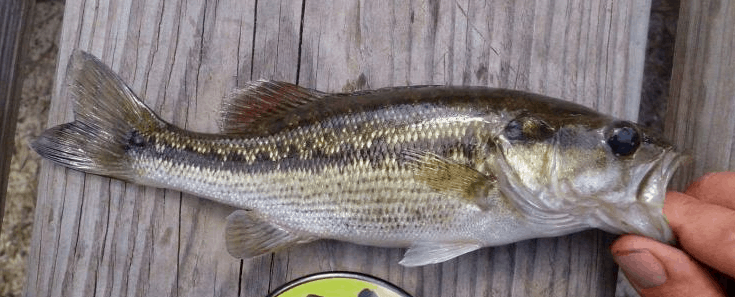
It is difficult to distinguish from the spotted bass as they closely resemble each other. It is found in the rivers of Southern Alabama and Florida. It is still under study to determine patterns and preferences as it was recently discovered. The feeding patterns are similar; insects for the small bass, crayfish, and fish as they mature.
They seem to prefer a unique habitat because no other bass species are present where they have been found. This is good for the Choctaw bass as it reduces the chances of the species becoming extinct through interbreeding with more common species like the spotted bass and the Alabama bass.
Temperate Basses
Striped bass fish
These basses are classified differently as they are not closely related to the black basses, who are members of the sunfish family. They are found in fresh water and brackish water. We shall have a look at four of their species found in America.
White Bass (Morone Chrysops)
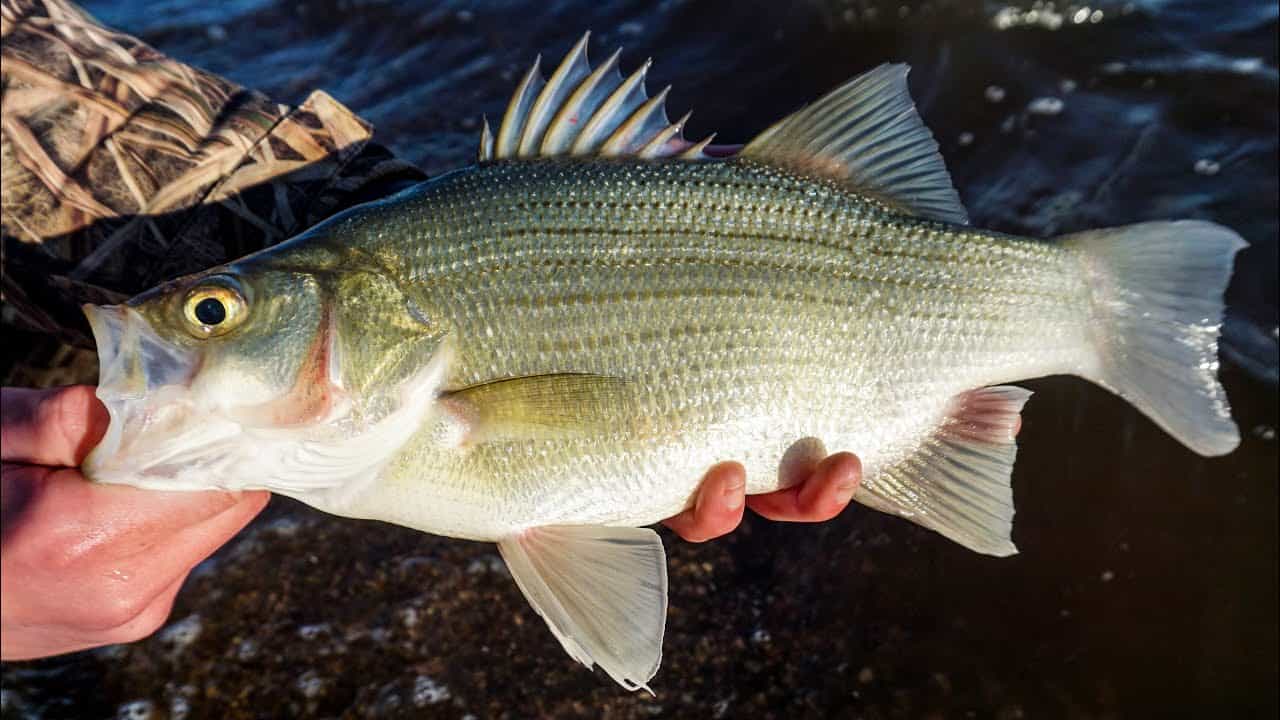
Often referred to as sand bass, it is a silvery-white fish with 4 to 7 vertical stripes on its sides. There is a clear separation between its first and second dorsal fins, and it has two tooth patches toward the back of the tongue. Adults average 10 to 15 inches long and 1lb weight. The highest recorded weight is 5lb.
They generally avoid turbidity and prefer clear current and backwater areas over rocks and sand. They migrate to creeks, streams, and shallow rivers during mating season. Their young will live in shallow water and move to deeper water as they mature.
Their diet includes aquatic insects and small crustaceans like water fleas and copepods. The more mature prefer eating fish like shad, minnows, and sunfishes. They travel in large schools in search of prey.
Yellow Bass (Morone Mississippiensis)
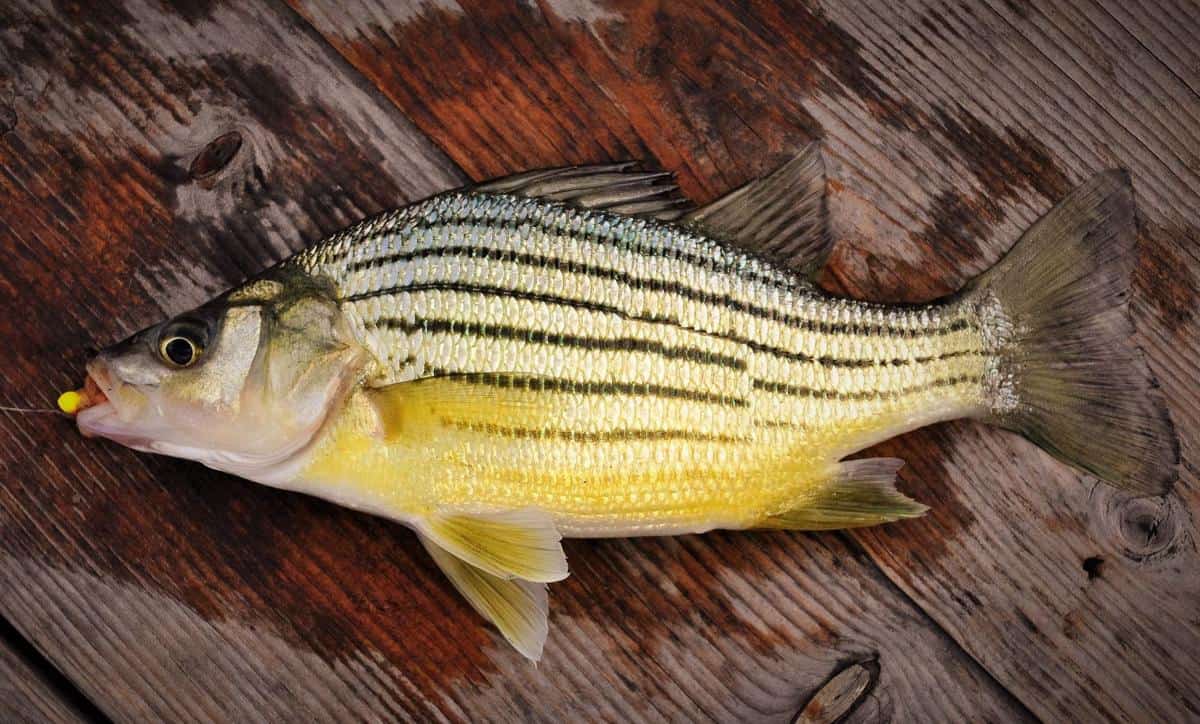
This bass is common in the Mississippi River's clearer waters and pools and backwaters of large sluggish rivers. The largest concentrations are in Lake Chicot, The Horseshoe Lake in Crittenden County, and The Mallard Lake in Mississippi County. They are not popular as game fish because of their small sizes, but they are edible and are fished for food.
They have 5 to 7 distinct black stripes running along their sides, with the bottom ones broken close to the anal fin. They usually have a dark olive green coloration that turns to a brassy yellow towards the stomach. Adults weigh approximately 2lbs.
The young feed on aquatic insects like midge larvae, small crustaceans, and zooplankton, progressing to small fishes like shad and silversides as they mature.
Striped Bass (Morone Saxatilis)
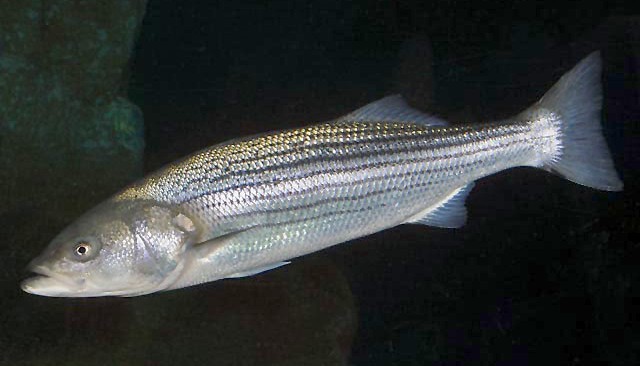
It is commonly referred to as the striper because of the 6 to 9 black horizontal stripes running along its length towards the caudal fin. It has 1 or 2 distinctive tooth patches toward the back of the tongue. The upper surface is olive green. The sides are silver and the underbelly white in color. They can grow up to a weight of 65 lb, with the largest recorded at 81 lb.
They are excellent game fish and have occasionally been used as predators to control the population of other fish like gizzard shad. Because of their size, be sure to have a good bass reel when fishing for these.
They naturally spend time in saltwater though they have adapted to freshwater whenever they have been introduced. They feed on mayflies, other invertebrates, crayfish, shad, and other fish.
White Perch (Morone Americana)
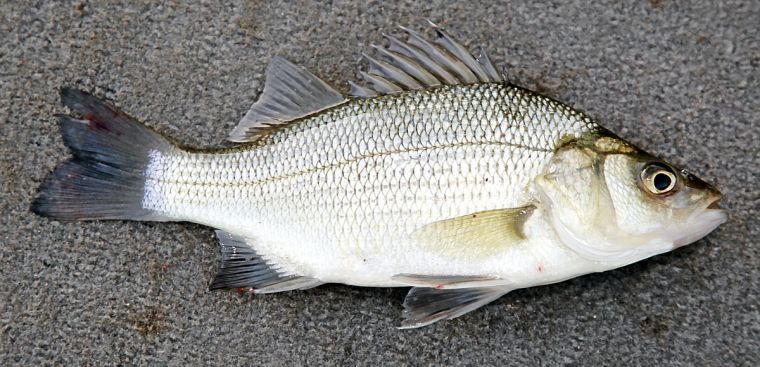
This one appears on this list because it is not a true perch, as the name may imply. It is a moronid fish, which means it is closely related to our temperate basses. It is mostly found in brackish water but is also found in freshwater coastal drainages of North America.
They have a silvery-white color and may develop a darker shade close to the dorsal fin and on the top of the body as they mature, depending on their habitat. Adults can measure up to 19.5 inches and 5lbs in weight.
They largely feed on the eggs of many fish species and occasionally small minnows, bloodworms, grass shrimp, and razor clams.
Conservation of Bass Fish
As recreational fishing gains popularity, the need to manage fish stock and fisheries conservation to sustain this demand becomes more pronounced. Most tournaments have imposed catch limits while adopting catch-and-release angling, where the fish are released back into the water after weighing to maintain their population. Modern fishing boats have installed livewells to keep the fish alive on the boat as they search for bigger catches.
The Pledge to Pitch It movement is a call to anglers to pitch their worn-out soft plastic baits into trash cans or appropriate recycling canisters instead of tossing them in the water. It was formed as a reaction to the proposed legislation banning the sale and use of soft plastic baits.
Their careless disposal was believed to be having detrimental effects on the maritime ecosystem. The American Sportfishing Association (ASA) and Keep America Fishing, its grassroots advocacy team, started the pitch it campaigns to address the problem.
delfabbrotheraideban.blogspot.com
Source: https://www.boatsafe.com/types-bass-fish/
0 Response to "Do Bass Have Teeth Do Bass Feed in Schools"
Post a Comment